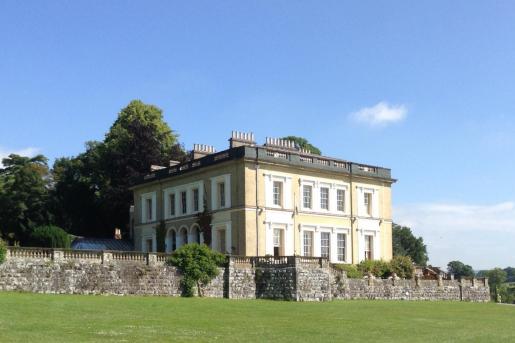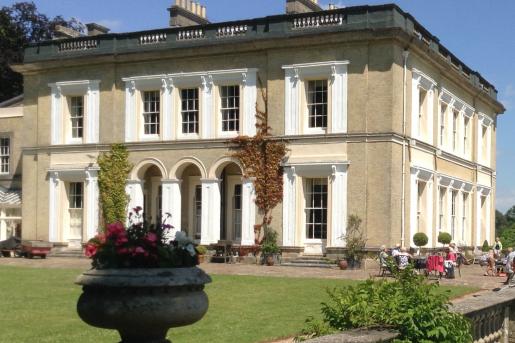- Parkland
- Gardens
- Walled Garden
- C18
Escot House was built in 1837 by Henry Roberts for Sir John Kennaway replacing an earlier house built in 1680 which was destroyed by fire in 1808. The present building is a plain three storeyed block of yellow brick in an uninspired neo-Grecian style with a raised terrace to the south and west of the piano nobile. A fine C18 park with a lake survives which has been attributed by some to Capability Brown but there is no documentary proof. There is evidence, however, that Nathaniel Richmond advised at Escot in the 1770s. Richmond was a contemporary of Brown and worked for him from 1754 to 1759 before setting up his own practice. Richmond's parkland designs were similar to Brown's, so it is fair to say that Escot is in the English Landscape style which Brown promoted. John Veitch also gave advice on the grounds and the philosopher John Locke is reputed to have planted some of the beeches. ‘Perhaps there are no plantations in Devonshire so strong and luxuriant as those at Escot’, said Polwhele in the 1790’s. Sale particulars of 1794 noted ’the pleasure grounds, shrubbery and flower garden, laid out in serpentine gravel walks and grass plots, and planted with a great variety of healthy trees, flowering shrubs and plants’ as well as ’a kitchen garden, orchard and melon ground, a hot-house, peachery and greenhouse’. ‘ Parks, pleasure grounds, groves, plantations, fish ponds and meadows, most beautifully formed by nature, tastefully ornamented with stately oak, beech and other trees, and commanding delightful prospects of the surrounding rich country, to a great extent, and refreshed by a constant stream running through the grounds.’ The Great Park comprised 161 acres and the Front Park 26 acres.White (1850) noted it as ‘a handsome seat'. Escot House stands on a well-wooded demense of 500 acres, remarkable for the luxuriant growth of its firs and forest trees.'
House, conservatory, terrace walls and steps, coach house, stables, cottages, linhay, kitchen garden walls, lodges, gatepost and railings, all listed Grade II
Cherry & Pevsner: The Buildings of England – Devon, 1989: 356
T Gray: The Garden History of Devon, 1995: 98-101
S Pugsley: Devon Gardens - An Historical Survey, 1994:177


